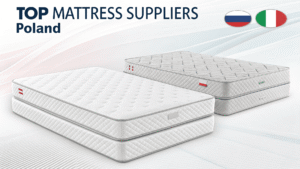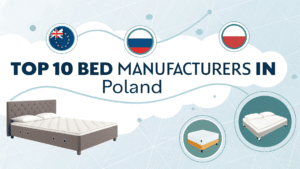Bouclé beds are trending across Canada and Europe, but most retailers aren’t sure what the material actually contains. If you’ve wondered whether bouclé is wool, synthetic, or a mix—read on.
Bouclé fabric is typically made of looped yarns, often polyester, wool, or blends. The yarns create a curly, textured surface that looks plush while remaining breathable and light.

"bouclé fabric1 detail")
Bouclé is a look, a texture, and a function. Understanding its content and structure helps you avoid costly return rates, choose better suppliers, and communicate more confidently with your customers.
What kind of fabric is bouclé?
Bouclé can look elegant in catalogs, but buyers still need to know how it behaves in the real world—logistics, cleaning, and durability matter.
Bouclé is a textured upholstery fabric made from looped yarns, often using polyester, wool, or a blend of both.

Bouclé is not a single type of fiber—it's a weaving method. The name comes from the French word for “loop.” These loops are what give the fabric its visual depth and soft, cloud-like feel.
Common fibers used in bouclé:
| Fiber Type | Use Case | Feel | Price Impact |
|---|---|---|---|
| Polyester | Common in mass production | Soft, bouncy | Low cost, easy to clean |
| Wool | Premium option | Warm, matte, breathable | Higher cost |
| Blended | Mix of polyester/wool | Balanced | Moderate price, better structure |
For upholstered beds, polyester-based bouclé offers the best balance between softness, cost, and ease of care. The looped texture masks dust, fingerprints, and light creasing—making it perfect for display and photography.
Is bouclé better than velvet?
Retailers often compare these two popular materials when deciding what to add to their lineup for the season.
Bouclé is not better or worse than velvet—it simply offers a more casual, textured, and matte aesthetic, while velvet offers luxury and shine.

Both bouclé and velvet have distinct markets and moods. Velvet suits dramatic interiors, upscale homes, and glam aesthetics. Bouclé leans toward minimalism, Nordic style, and lifestyle-focused visuals.
Use Case Differences:
| Attribute | Bouclé | Velvet |
|---|---|---|
| Texture | Looped, irregular | Smooth, dense |
| Sheen | Matte | Glossy |
| Style Fit | Nordic, casual, cozy | Glam, modern, classic |
| Shipping Durability | Good (minor compression) | Better (high elasticity) |
If your store serves mid- to high-end clients in cold-weather markets like Canada, bouclé beds can help build a warmer visual experience. If you're focusing on fast-moving online inventory, velvet might result in fewer post-delivery creases.
What are the disadvantages of bouclé fabric?
The texture may be beautiful, but that doesn’t mean it’s flawless for all use cases—especially in humid or rough environments.
Bouclé fabric can be prone to pilling, snagging, and moisture retention, especially in high-humidity regions or high-traffic areas.

One of the challenges I’ve seen from partners is that lower-cost bouclé can look worn after just a few months—especially if the loops are loose or long. This usually results in customer complaints2 about fuzziness or fabric damage.
Key Disadvantages by Scenario:
| Issue | Description | Retail Impact |
|---|---|---|
| Pilling | Caused by friction or overuse | Higher complaint rate if not disclosed |
| Moisture Absorption | Traps humidity in coastal or tropical markets | Risk of mold or odor in storage |
| Snagging | Loops can catch easily | Not ideal for homes with pets or kids |
For markets like Canada, which are cold and dry, these problems are minimal. But I always advise against using bouclé in Southeast Asian or tropical export markets without anti-humidity packaging.
What fibers are commonly used in bouclé upholstery for beds?
Retailers often need to explain fabric content on product listings or for customs clearance. Clear answers make product positioning easier.
Most bouclé bed fabrics are made from polyester, wool, or blends. The type used affects feel, durability, and pricing.

I’ve worked with bouclé fabrics ranging from RMB 13/m to RMB 28/m depending on fiber content and density. In general, the heavier and denser the bouclé, the better it holds shape during transit and use.
Fiber Grades & Application Guidance:
| Fiber Type | Price (RMB/m) | Best Use Case |
|---|---|---|
| Polyester (Basic) | 13–16 RMB | Budget-friendly online models |
| Blended (Poly + Wool) | 18–22 RMB | Mid-tier showroom items |
| Wool-rich Bouclé | 23–28 RMB | Premium or designer collection |
For export to Canada or Europe, I usually recommend 18 RMB/m and up for mid-market positioning. These versions tend to survive packaging better and have lower post-sale issues.
Does bouclé fabric increase return or complaint rates in online sales?
E-commerce retailers often worry about how bouclé performs after long shipping or in vacuum-packed boxes.
Yes, bouclé may increase complaint rates slightly, especially if the fabric creases, pills, or shows texture variation upon unpacking.

Online buyers can’t touch the fabric before purchase, so texture surprises can trigger complaints. In reviews, we often see notes like “not as smooth as expected” or “rougher than photo.”
Common Complaint Causes:
| Complaint | Reason | Solution |
|---|---|---|
| Color variation | Bouclé reflects light unevenly | Use natural light in product photos |
| Wrinkles after shipping | Loop structure creases | Use thicker bouclé or box-packed shipping |
| Shedding or fuzz | Low-quality loop yarns | Choose high-density, short-loop bouclé |
In my experience, retailers who use anti-wrinkle lining and limit compression during packaging see fewer returns. Providing close-up videos or texture demos also helps set accurate expectations.
Which type of bouclé is best for cold-weather markets like Canada?
Retailers in colder climates need to offer beds that both look and feel warm. Bouclé feels cozy—but not all types are equally suited for northern markets.
Blended or wool-rich bouclé is ideal for cold-weather markets like Canada due to its warmth, weight, and texture.

Jack, like many of our Canadian partners, is sourcing for customers who care about seasonal comfort. In such cases, we always push denser bouclé options with thicker backings.
Best Bouclé Types by Region:
| Region | Recommended Bouclé | Reason |
|---|---|---|
| Canada, Germany | Wool or blended | Warm, upscale texture |
| Australia, UK | Polyester-based | Balanced warmth + breathability |
| Southeast Asia | Not recommended | Risk of mildew or softness loss |
Thicker bouclé also helps with in-store presentation during winter promotions. Customers tend to associate the looped fabric with “cozy,” “winter,” or “high-end,” which improves showroom conversion rates.
How does bouclé compare to velvet in texture, resilience, and perceived quality?
If you’re choosing just one upholstery style to push in the next container, understanding their pros and cons can save a lot of repacking later.
Bouclé feels textured and matte, while velvet feels smooth and shiny. Velvet resists creasing better, but bouclé hides wear better.

I always recommend retailers define what their customers prioritize—visual drama or cozy texture.
Comparison Table:
| Feature | Bouclé | Velvet |
|---|---|---|
| Texture | Textured, soft loops | Smooth, dense |
| Resilience | Moderate | High (if high-density) |
| Perceived Luxury | “Natural” luxe | “Glamorous” luxe |
| Complaint Risk | Texture mismatch | Color mismatch |
| Cost Range (RMB/m) | 13–28 | 7–24 |
If your target market includes homeowners decorating cozy or minimal interiors, go with bouclé. For classic or luxe interiors, velvet is still a safe bet.
Conclusion
Bouclé isn’t just about touch—it’s about how fabric choices impact returns, reputation, and logistics. Know the fibers, pick the density, and match it to your market.




